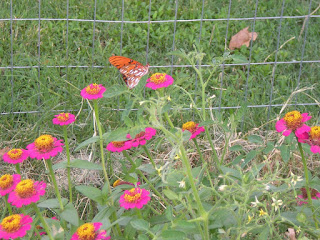Start with dry seeds: When collecting seeds from your garden make sure that they are completely dry before trying to store them. If the seeds develop mold then they are not usable. For additional tips on drying seeds go to http://www.organicgardening.com/) I wash mine to remove any pulp and then place them on several layers of paper towels. Then put them in an area with no direct sunlight but good air flow for a week or so, then can move them to a permanent storage container.
Packing: Once the seeds are thoroughly dry it is time to place them in some sort of envelope that can be marked with the variety name, date and any other helpful gardening information. Then place them in some type of resealable storage container. You will need a container that will seal out humidity and rodents. It is best not to use cloth, paper or a thin plastic bag. For extra protection from moisture add some dry milk powder or a desiccant such as silica gel to the bottom of the container.
Storage area: You need to then find a good area that is cool, and dry. Most seeds remain viable at a constant storage temperature of 40 degrees or lower. This makes the refrigerator a good choice. If you do use the refrigerator when you take out the container let warm to room temperature before opening it up to remove the seed packets.
Seed Viabilty: Even when you do all the right things seeds may not be viable, so it is best to check them out before doing all of the hard work of planting. To do so spread about 10 seeds from each packet on a wet paper towel, fold it, then place into a plastic bag, seal and label the bag. Allow these bags to remain at room temperature for a week or more. If all 10 seeds sprout, you're in business. Even it only 6 do go ahead and use the seeds just sow more thickly to allow for the seeds that may not germinate.












